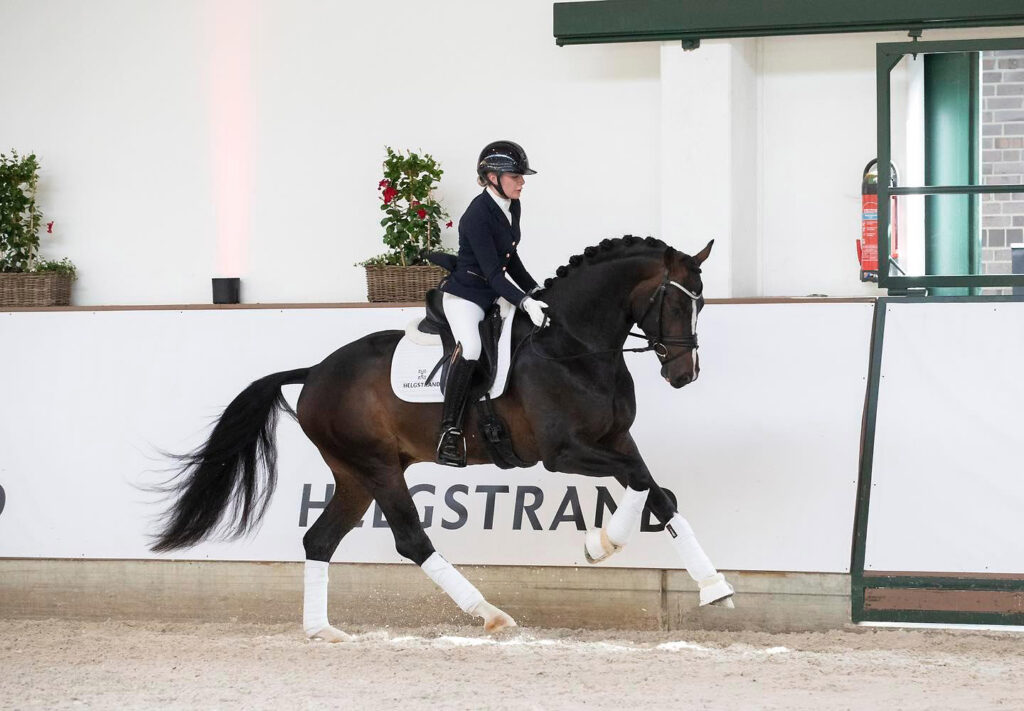Carl Hester talks about riding the canter:
“If you describe to someone what an extended trot look like, it is very easy to do, but when you say to someone what is an extended canter, lots of people think you just go flat out from one end to the other.”
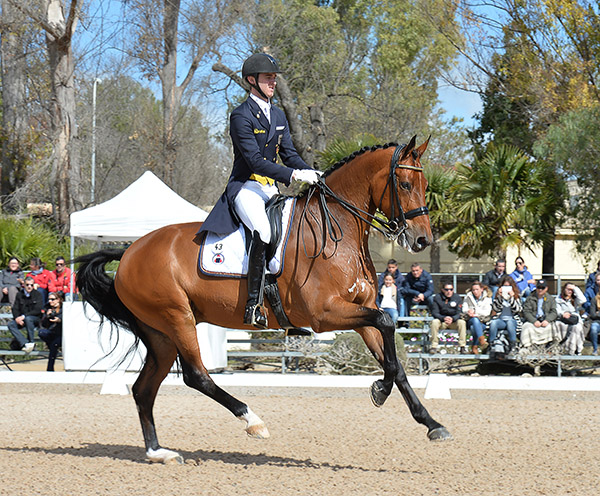
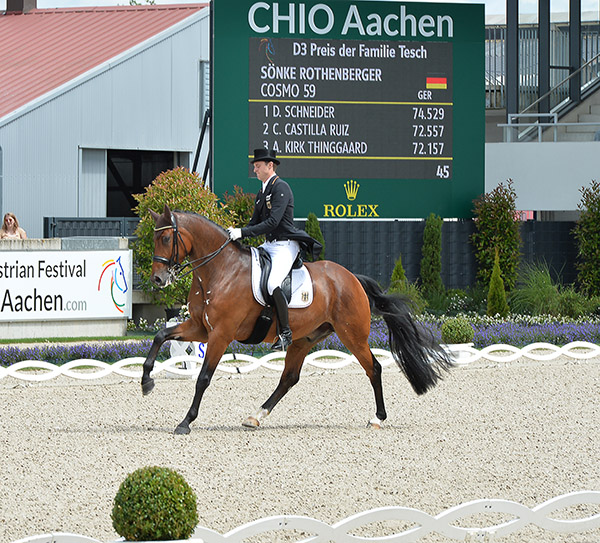
But a horse with a good hind leg, like Sven Rothenberger’s Cosmo, they go up first and then they cover the ground, then up again, and cover the ground, and it is because the push sends them up rather than being on the forehand all the time.
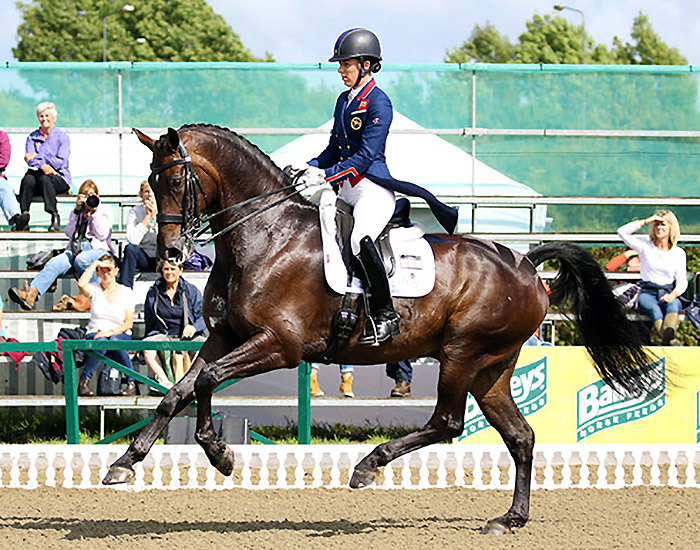
Charlotte demonstrates for us on Delacato
So many extended canters come on the forehand whereas the horses with a hind end like Delacato, it pushes them up. He’s a gorgeous horse, he looks like a show horse.”
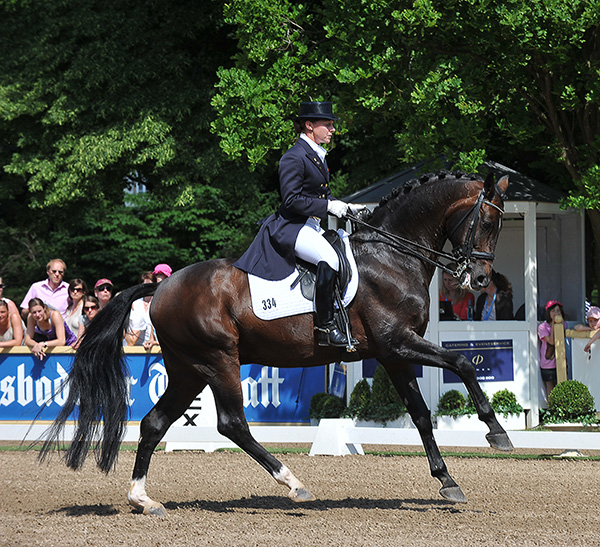
Here’s Diamond Hit in canter, sire of Delacato, showing us where he got his canter. Diamond Hit was a half brother to Sandro Hit.
And some advice Carl gave riders in a clinic:
“When you are riding short canter, I want to think I could walk along beside you, that short. Your horse is a bit spikey in canter, let him sink to the floor and stretch. You push down with your seat and he goes hollow, think of sitting over the knee. Think about lengthening not getting the neck up, and over-sitting in the canter.
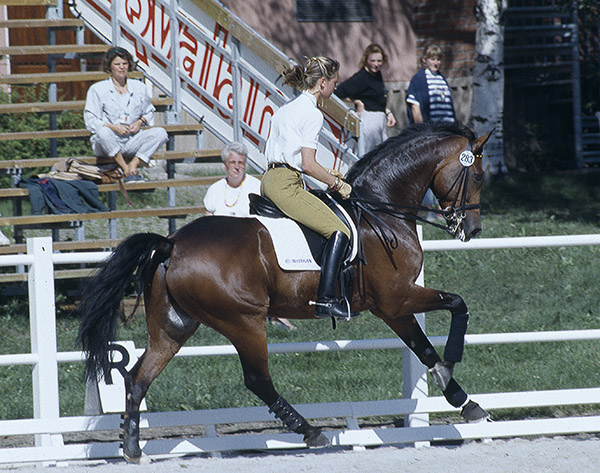
And finally on Rembrandt working with Harry Boldt:
“I remember Nicole Uphoff, she could gallop Rembrandt from one end of the arena to the other, and in one stride she was cantering on the spot. Forward is easy, back and still forward, not so easy.”
Breeding a dressage winner this season in Australia? Go to International Horse Breeders and select the right stallion for your mare. There’s a great range of European bloodlines, including Elastic, and others from the ‘E’ line. www.ihb.com.au
